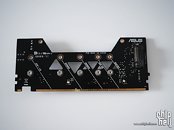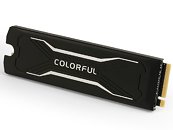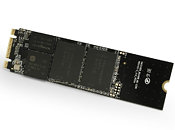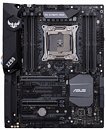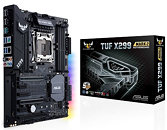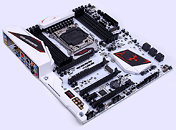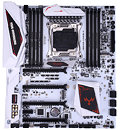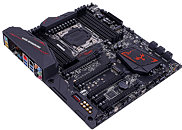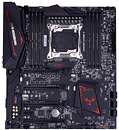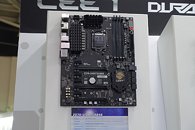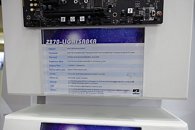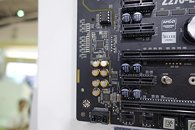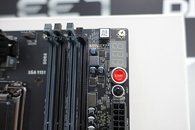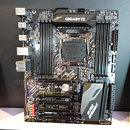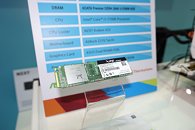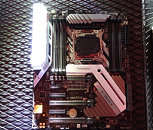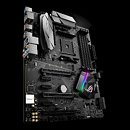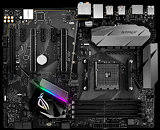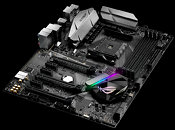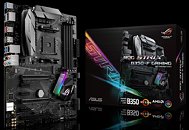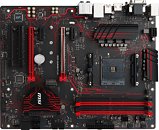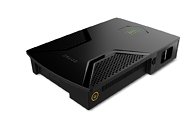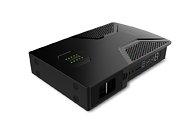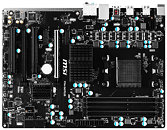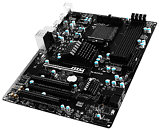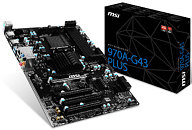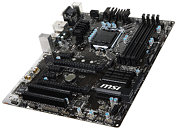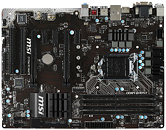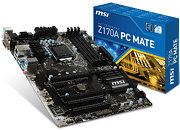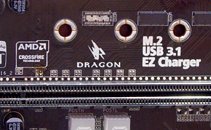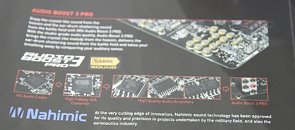
ASUS ROG Zenith Extreme X399 Motherboard Pictured Some More
More pictures emerge of ASUS' flagship socket TR4 motherboard for AMD Ryzen Threadripper processors, the Republic of Gamers (ROG) Zenith Extreme X399. Halfway between the width of a standard ATX and an E-ATX motherboard, the Zenith Extreme doesn't appear as crowded around the CPU socket as some of the other socket TR4 motherboards showed off at AMD's Computex 2016 reveal, this June. The CPU is powered by a high-current 8-phase VRM, and to preempt VRM overheating issues as seen on Intel X299 platform motherboards, ASUS deployed an active VRM cooling solution. Heat drawn by the VRM heatsink is transported to a secondary heatsink under the rear I/O shroud by a heat-pipe, which is ventilated by a 40 mm fan, which vents hot air through the rear.
The TR4 socket is wired to eight DDR4 DIMM slots, supporting up to 128 GB of quad-channel DDR4 memory; and four PCI-Express 3.0 x16 slots. Interestingly, these slots are wired x16/x8/x16/x8, even though the Ryzen Threadripper processor features 64 PCI-Express lanes, according to AMD. Other expansion slots include an open-ended PCI-Express 3.0 x4, and an x1 slot. The board draws power from a combination of 24-pin ATX, two 8-pin EPS, and an optional 4-pin Molex input. Storage includes four 32 Gb/s M.2 slots (two under the detachable chipset heatsink cover, and the other through the included DIMM.2 accessory), a 32 Gb/s U.2 port, and six SATA 6 Gbps ports. The metallic chipset heatsink cover features thermal padding, so it can draw heat from at least one stacked M.2 SSD.
The TR4 socket is wired to eight DDR4 DIMM slots, supporting up to 128 GB of quad-channel DDR4 memory; and four PCI-Express 3.0 x16 slots. Interestingly, these slots are wired x16/x8/x16/x8, even though the Ryzen Threadripper processor features 64 PCI-Express lanes, according to AMD. Other expansion slots include an open-ended PCI-Express 3.0 x4, and an x1 slot. The board draws power from a combination of 24-pin ATX, two 8-pin EPS, and an optional 4-pin Molex input. Storage includes four 32 Gb/s M.2 slots (two under the detachable chipset heatsink cover, and the other through the included DIMM.2 accessory), a 32 Gb/s U.2 port, and six SATA 6 Gbps ports. The metallic chipset heatsink cover features thermal padding, so it can draw heat from at least one stacked M.2 SSD.



